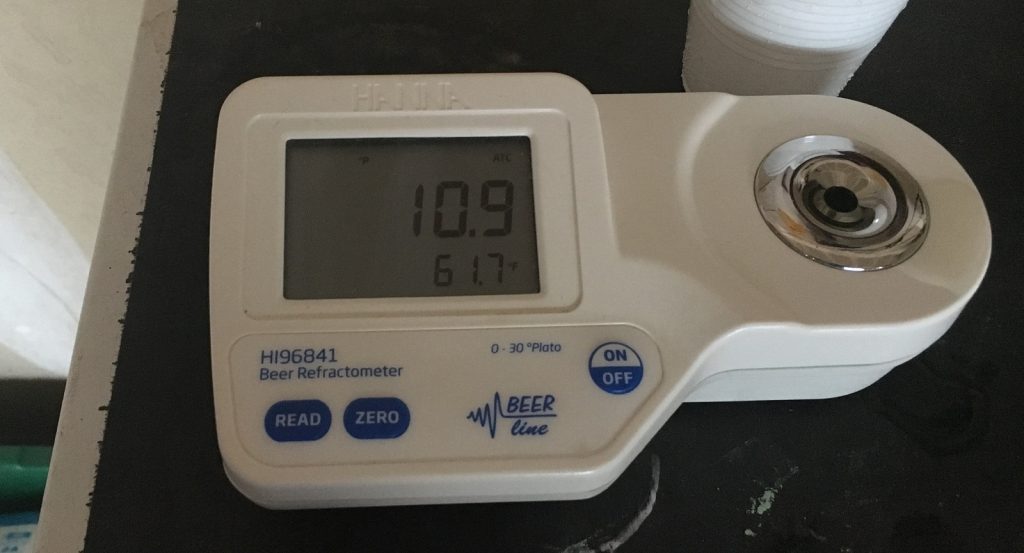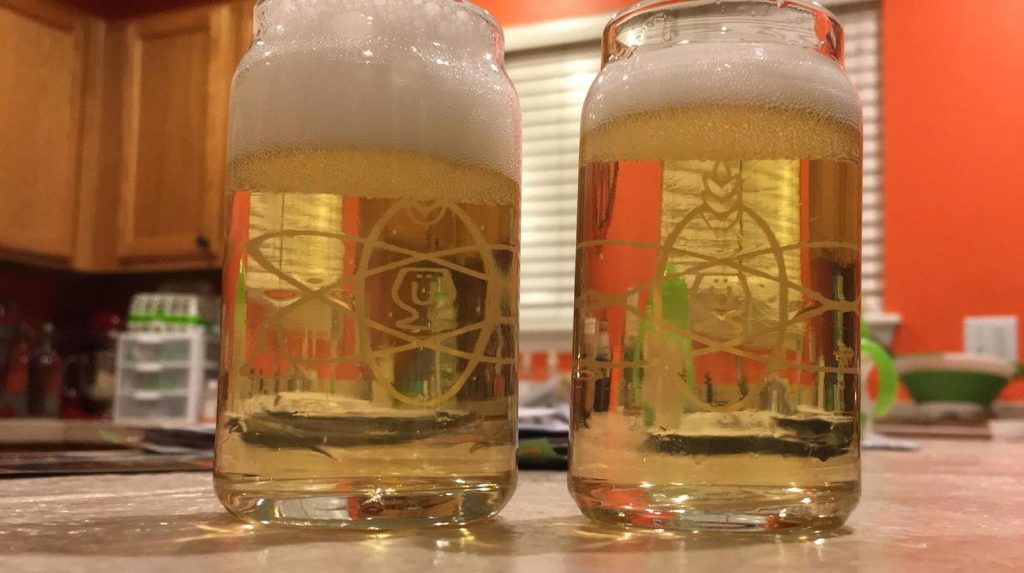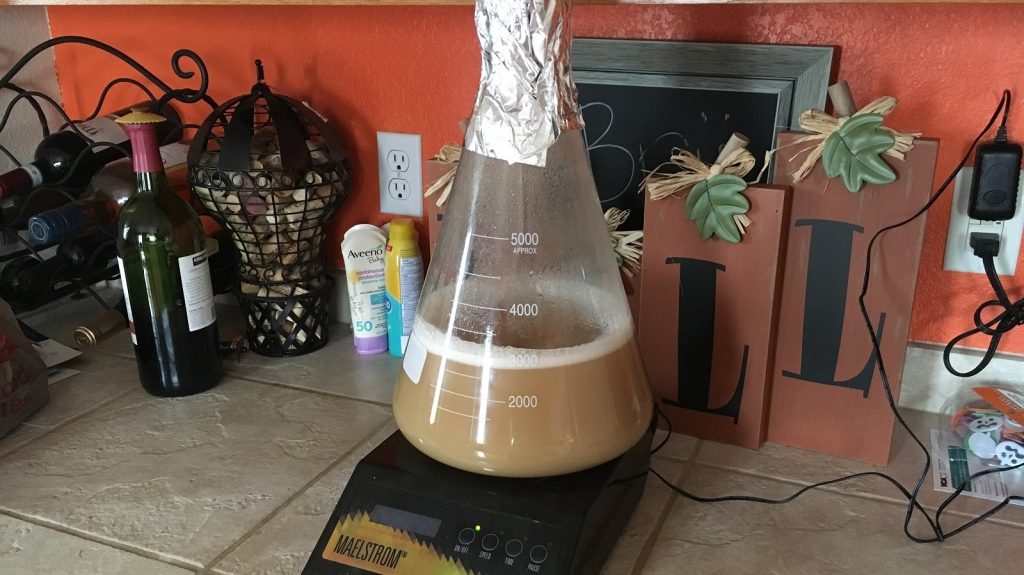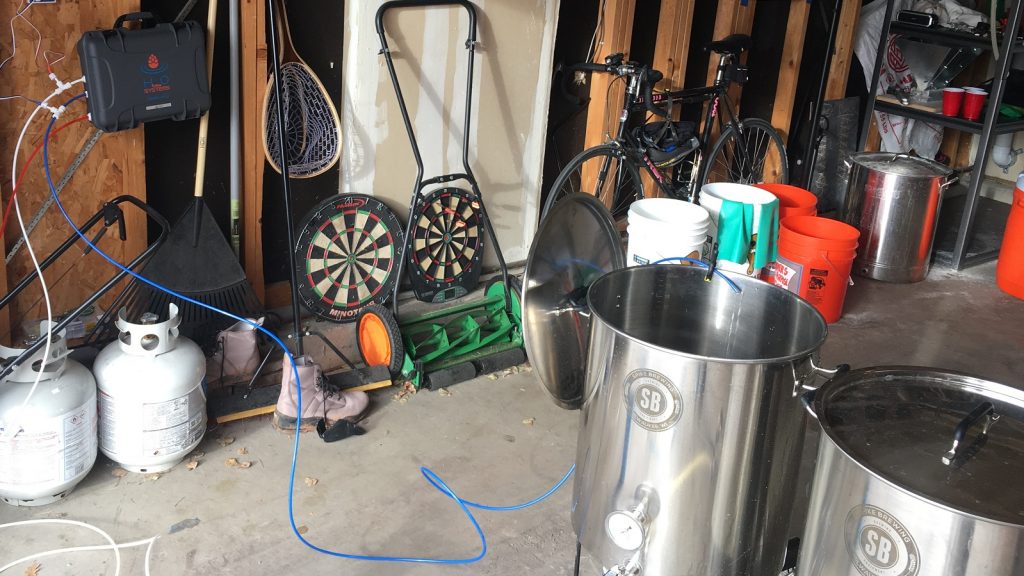Author: Jake Huolihan
Of the various adjuncts that can be added to beer, hot chili peppers are among the most unique, imparting flavors commonly associated with Southwestern cuisine along with a noticeable heat. While the ultimate Scoville rating of a chili beer largely depends on the types and amounts of peppers used, some content the method of extraction plays an equally important role.
A common and simple method for imparting chili characteristics in beer involves adding the chopped fruit directly to the beer, usually during fermentation similar to a dry hop addition. However, there are some who believe adding that much plant matter to the beer leads to undesirable flavors, and to avoid this, they use a tincture.
In general, tinctures are extracts produced by soaking a particular material, in this case chili peppers, in alcohol over a period of time, after which the material is separated from the liquid. Commonly used in cooking to add the essence of a certain ingredient to a dish, tinctures offer brewers an easy way to experiment with different flavors that not only eliminates the addition of vegetal matter to their beer, but comes with minimal risk in that dosing can occur on a very small scale.
Since moving to Colorado in 2012 I learned that many people here are obsessed with adding chili flavor to anything possible, beer being no different. While I’ve had some awesome examples of chili beers in the past I’ve never quite brewed them often enough to have strong opinions on the best method for extracting those great flavors and heat. After a recent discussion with a fellow homebrewer I decided to put tincture extraction versus dry-peppering to the test.
| PURPOSE |
To evaluate the differences between beers where either fresh chili peppers were added directly or a chili pepper tincture was used.
| METHODS |
My favorite chili beers have started with a base that’s light and pale, which allows the pepper character to shine. As such, I went with a simple Kölsch as the base style for this xBmt.
Fuego
Recipe Details
| Batch Size | Boil Time | IBU | SRM | Est. OG | Est. FG | ABV |
|---|---|---|---|---|---|---|
| 5.2 gal | 60 min | 42.9 IBUs | 3.4 SRM | 1.044 | 1.010 | 4.5 % |
| Actuals | 1.044 | 1.01 | 4.5 % | |||
Fermentables
| Name | Amount | % |
|---|---|---|
| EuroPils (Cargill) | 10 lbs | 100 |
Hops
| Name | Amount | Time | Use | Form | Alpha % |
|---|---|---|---|---|---|
| Perle | 20 g | 60 min | Boil | Pellet | 7.2 |
| Perle | 30 g | 30 min | Boil | Pellet | 7.2 |
Miscs
| Name | Amount | Time | Use | Type |
|---|---|---|---|---|
| Chilis | 2.20 oz | 7 days | Secondary | Spice |
Yeast
| Name | Lab | Attenuation | Temperature |
|---|---|---|---|
| Dieter (G03) | Imperial Yeast | 75% | 60°F - 69°F |
Notes
| Water Profile: Ca 65 | Mg 0 | Na 8 | SO4 67 | Cl 68 |
Download
| Download this recipe's BeerXML file |
I made a single large starter of Imperial Yeast G03 Dieter a couple days ahead time.
The night before brewing, I weighed out the grains and collected the RO water for a single 10 gallon/38 liter batch.
I began heating the water first thing the next morning then moved on to milling the grain.
With the water properly heating, I mashed in and gently stirred before checking to ensure I’d hit my target mash temperature.

At this point, I weighed out the kettle hop additions.
At the end of the 60 minute mash rest, I collected the sweet wort then brought it up to a boil.

My miniature assistant helped me add hops at the times stated in the recipe.
Once the 60 minute boil was complete, I quickly chilled the wort.

A refractometer reading showed the wort had hit the expected OG.

After allowing the cold break to settle out of the wort, it was evenly split between identical fermentors that were placed in my chamber controlled to 62°F/17°C. After pitching identical amounts of the yeast starter into each batch, I proceeded with pepper preparation.
After coring and washing 6 jalapeños, 3 went into a vacuum sealed bag that was placed in my freezer while the other 3 were diced and tossed into canning jars with a total of 4 oz/118 mL of Everclear. The peppers were left alone until hydrometer measurements indicated the beers had reached FG, which was 7 days post-pitch.

At this point, I added the untreated peppers directly to one beer while the other received the pepper tincture, which had the peppers strained out.
I let the jalapeños mingle with the beer for another 7 days before racking the beers to CO2 purged kegs.

The beers were left to carbonate and condition in my keezer for a couple weeks before being served to unsuspecting participants. While both eventually cleared, I noticed the tincure beer took a bit longer than the one hit with actual peppers.

| RESULTS |
A total of 23 people of varying levels of experience participated in this xBmt. Each participant was served 1 sample of the fresh chili beer and 2 samples of the chili tincture beer in different colored opaque cups then asked to identify the unique sample. A total of 12 tasters (p<0.05) would have had to accurately identify the unique sample in order to reach statistical significance, but only 10 (p=0.21) did, indicating participants in this xBmt were unable to reliably distinguish a chili beer made with either fresh jalapeños or a jalapeño tincture.
My Impressions: Despite thinking I could tell a difference between these beers based on samples I took prior to packaging, I simply could not tell them apart in my own series of blind triangle tests. As for the beer, I loved loved loved it! The jalapeño flavors really came through and paired beautifully with the Kölsch base beer. As good as it was, I’ll likely be adding a habañero to my next batch to up the heat a bit more.
| DISCUSSION |
When it comes to adding fruits and vegetables to beer, there’s a lot of talk about the impact the flesh will have on its flavor, with many arguing it can impart undesirable vegetal characteristics. Given the earthy nature of most peppers, many brewers of chili beers have taken to producing tinctures to extract the good stuff then adding the resultant liquid sans flesh. Some also claim using tinctures can lead to more pungent pepper characteristics in beer. Interestingly, the results from this xBmt seem to suggest the flesh of peppers may not have much of a noticeable impact.
One caveat to this xBmt is that it was completed 5 gallon/19 liter batches with a relatively small amount of peppers. While it’s possible these findings could scale to larger batch sizes, there’s a chance the effect isn’t necessarily linear, that the same ratio of pepper flesh to beer in a bigger batch could extract more undesirable flavors.
That said, as a homebrewer who loves chili beers and couldn’t tell these xBmt beers apart at all, I see no reason to choose one method over the other based on flavor. For the person who likes the spicier side of brewing, I could see having a large vat of pepper tincture being quite convenient, allowing for easy additions to anything from a pint to a full batch. It’s also a good way to test the pungency of the pepper beforehand, allowing for precise dosing to achieve the desired heat and flavor profile. But for the person making a one-off, adding some diced up chunks of fresh chilis will likely do the trick equally as well.
If you have any thoughts about this xBmt, please do not hesitate to share in the comments section below!
Support Brülosophy In Style!
All designs are available in various colors and sizes on Amazon!
Follow Brülosophy on:
FACEBOOK | TWITTER | INSTAGRAM
If you enjoy this stuff and feel compelled to support Brulosophy.com, please check out the Support page for details on how you can very easily do so. Thanks!




















23 thoughts on “exBEERiment | Chili Beer: Whole Pepper vs. Tincture In A Kölsch”
Awesome experiment to see as I have a habanero tincture on the kitchen counter as we speak ready for when I bottle in a week or so! Since I’ve also never used pepper in a brew my rationale was to be able to titrate the flavor.
Side note – I noticed the caption on the last picture before the results says “flesh” where I think you meant “fresh” (unless I missed that part of the experiment 😉 )
Cheers!
Even if it was frozen, it’d be flesh.
Thanks, this is helpful. I have a stout in secondary with some nibs and vanilla beans right now that’s also getting peppers in the next day or two. I was debating which way to go. Based on your experience, I’ll go the tincture route so I can balance the flavors better, adding the tincture in stages and doing taste tests.
Do you still cold crash and add gelatin to your beers?
I don’t think I’ve gelatin fined a beer in almost a year. Through the use of whirlfloc, brewtan B, and floating dip tubes my beers become incredibly clear in very little time.
I have a floating dip tube on the way and already use whirlfloc. What’s your method/dosage with the Brewtan B?
I use the dosage instructions from wyeast site, added to mash and boil
You are sure right about peppers and Colorado. One thing I really miss about CO (aside from my awesome homebrew club) was “pepper season”! Roadside stands roasting peppers… green chili on every menu, green chili over breakfast burritos…and pepper beers, of course. I never made one, but knew a few folks who were very good at it.
Curious, did you happen to taste the tincture before adding it to the batch? I’ve only tried chilies once, and it was my first all grain batch. They were dried chilies and I added them in the last five minutes of the boil. I think I would go tincture if I tried one again. Nice xbrmt!
Not sure if you’ve ever tasted Everclear before, I had no desire to taste it again. I’ll leave that flavor to my college days
Lol, that exactly why I asked. I can only imagine what jalapeno infused everclear would taste like. I guessing maybe essence of napalm with a hint of flaming hot Cheetos.
“After coring and washing 6 jalapeños…”
“As good as it was, I’ll likely be adding a habañero to my next batch to up the heat a bit more.”
I’m not surprised that you didn’t get the heat you were looking for. The compounds that give peppers their kick (capsaicinoids) accumulate predominantly in the pepper placental tissue, which is that “core” that you removed from the jalapenos. In other words, you removed the spicy stuff! As long as there isn’t another compelling reason for coring the peppers, such as worry about getting off-flavors from the seeds, I’d really recommend omitting that step for maximum kick.
Love the information from this xBmt. I make several chile beers and I generally use the actual pepper in them.
One question is if you have experimented with dried chiles or just raw/fresh chiles? I do a Mayan Imperial Stout that uses dried red chiles and I feel like that might give some off flavors. I am in the process of doing another batch with a tincture but was curious if you have had any experience with them.
Cheers!
Ive never added dry chili peppers to a beer though definitely on the list
I have made several batches of jalapeno beer. What I found was that the peppers commercially grown and available from the local grocery store vary widely in potency. One batch was *exactly* the heat I was looking for, the next time I used the exact same recipe and could hardly feel anything. The next batch was somewhere in the middle. It did seem that peppers I grew were more potent.
I would highly recommend going for a tincture to get the spice level you are looking for.
AFAIK it depends how long you leave them on the bush. Heat varies quite quickly in the ripening process.
….interesting experiment. I thought for sure you would notice the pepper flavor of the “real” peppers. My thoughts on this stem (heh) from Cave Creek Chili beer. (It had a jalapeño in the bottle). The heat was fun, but the vegetal green pepper flavor was just HORRID. It bears the distinction of being one of the only beers I’ve ever dumped.
What Joe said… The heat is in the seeds and the ribs of the chili. If you are coring them, you are removing the heat before you even start. Beyond that, capsaicin is hydrophobic, it won’t dissolve in water. That heat you’re getting from your slow cooker chili? That’s from the pepper solids in your stew. I’ve used dried chiles with seeds and ribs in the boil, in primary, and boiled them up and added the resulting teas at bottling. I’ve yet to produce a beer with any heat. How in the world did Rogue get that heat into their Chipotle Amber? As a home brewer, that’s my white whale. Until then, I’ll just keep a bowl of fresh serranos on the table along with the beer.
Like most “insoluble” things, very tiny amounts (just a few mg per liter) of capsaicin can be dissolved in water. That may seem pretty insignificant, but the compound is so potent that it’s enough to provide a couple hundred scovilles of heat. Keep in mind also that solubility will be higher in beer than pure water because of all the “impurities”–most notably the alcohol–that are present.
In regards to the boiling your peppers and adding the tea at bottling, I really wouldn’t expect this method to work. Due to the solubility limit, your chili tea will have a max heat of about 200 scovilles, so the tea itself will have a distinct spiciness. However, you then dilute it in the beer quite substantially. Even if that dilution is only 20 fold ( 1 qt of tea in a 5 gallon batch), that would make your final spice rating a mere 10 scovilles, which is so low as to be easily masked by the other flavors in the beer. Since the solubility is MUCH higher (over 1000 times higher) in alcohol, try the method that Jake used with making a tincture with a high alcohol solution and adding that. Or just keep using your method of keeping a bowl of serranos handy, since that’s pretty simple.
I have been passionately developing a jalapeño Pale Ale for about 10 years. With many batches under my belt I have realized there are 2 outcomes possible. Is it about the flavor of the pepper or the heat. Initially I created a novelty beer by putting unseeded sliced lightly roasted peppers in the secondary for 10 days. It was very hot, lacked jalapeño flavor and nobody wanted a second pint, but maybe some celery and ranch to kill the heat. I adjusted to add de-seeded jalapeños to the mash as well as the boil at 5 minutes. I then added 2 sliced peppers caramalized in the broiler and added to the secondary. I would sample until the heat was where I wanted it and then keg. My latest technique lends a wonderfull green jalapeño flavor and aroma and just a bit of heat that builds as you drink a pint. Did you get any of the peppers flavors in the beers you brewed with this experiment or was it just the heat from the capsaicin? I’ve never used a tincture and seems easier, so long as your still getting the pepper flavor and aroma. Assuming you want the flavor and aroma in the beer.
Haha! Wish I had seen this sooner. I make peppered beers often. In fact, I just kegged a habanero blonde today.
I always use frozen peppers sliced whole (sans stem), straight to fermentor; seeds, pith and flesh. For this batch I used 100g of slices.
The recipe is a clone of Country Boy Nacho Bait, the brewer suggested using 4-5 habs per 5gallon batch. I used about 3x that. Mine is spicier than Nacho Bait, and you can really taste the whole pepper. We really like the whole fleshy flavor. If you like the spice of Sriracha, you should probably stick with just a few habs.
Maybe I’ll re-do this experiment for the #BrüCrew 😉😉
Was the entire 4 oz of tincture used in the 5.2 gal batch?
I had to dump my first hot pepper beer after following an online recipe and going with the recommended amount in the fermenter. I’m not a fan but was brewing for buddies. i now keep habanero and jalapeno tinctures on hand and ley my buddies add to taste into there pours.
I grow my peppers and even the same variety of jalapenos vary widely from year to year depending on weather. There are numerous different varieties of jalapenos, even some with no heat. You never know exactly what you’re going to get for heat.